What is a Sales Funnel?
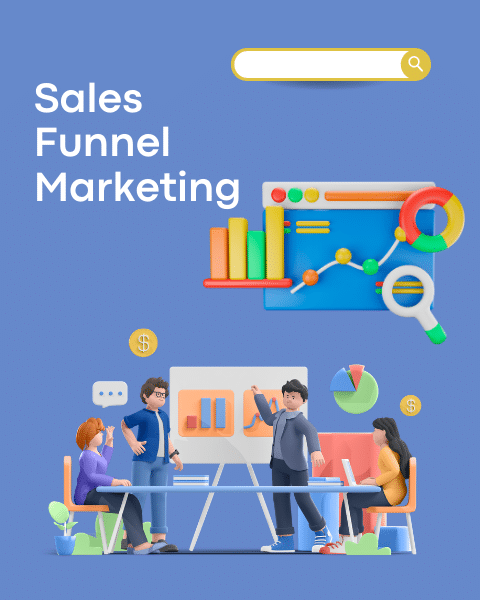
Today I want to talk to you about one of the most important concepts in digital marketing - sales funnels. If it sounds boring and confusing, let me tell you, it is not! Allow me to try to explain them to you and you will see they are actually pretty cool and useful.
A sales funnel is a fundamental strategy for businesses looking to boost their customer conversion rate. A sales funnel is a process that entails several stages that prospects undergo before becoming customers.
You no longer want your website visitors to be statistics. You want the process to go the same as it would when you visit any other business or a brick-and-mortar store.
The process starts with lead acquisition, whereby potential customers show interest in what your business has to offer. The business then nurtures these leads step by step by providing them with information about the products or services they care about.
The aim is to guide your leads into making a purchasing decision in the end, right? Sales funnels have been used for decades in traditional brick-and-mortar setups to increase customer conversions. Nowadays, digital marketers also employ sales funnels to track and improve online conversions.
This strategy ensures that businesses can efficiently manage leads, cultivate an experience that targets the customer’s buying journey, and optimize customer conversions.
Find Out More About Sales Funnels in the Following Posts

17+ ClickFunnels Examples to Boost Your Conversion Game in 2024
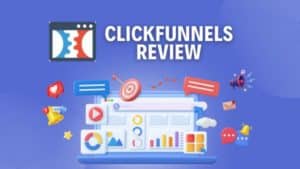
A Comprehensive ClickFunnels Review for 2024 – Pros & Cons Revealed

How to Create Undetectable AI Content in 2024 | Unrivaled Stealth Writing Solutions

GoHighLevel Review (2024) – Pros, Cons & Pricing
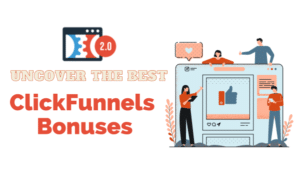
Uncover The Best ClickFunnels Bonuses of 2024 [Insider Guide]
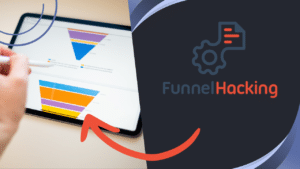
Unlock the Secrets of Funnel Hacks in 2024
My goal is to help you discover, how to optimize your business’s growth potential and secure clients by perfecting the process of constructing a successful sales funnel. I will provide you with detailed instructions on creating custom-made funnels for your needs that will help you increase conversions significantly and achieve long-term success.
I've gone through all the training, challenges, books, and tools out there, so I think I know what I am talking about 🙂
Short Summary
- Identify where customers are dropping out of your sales process
- Understand the four stages of a sales funnel and leverage tailored content to boost your conversions.
- Identify target audience, craft engaging content, use the best marketing automation tools and track relevant metrics for optimization.
- Personalize experiences, utilize multi-channel marketing & practice continuous improvement for long-term success.
- Guide customers toward a purchase with targeted content
- Understand your customer's journey better
Understanding Sales Funnels: The Key to Boosting Conversions
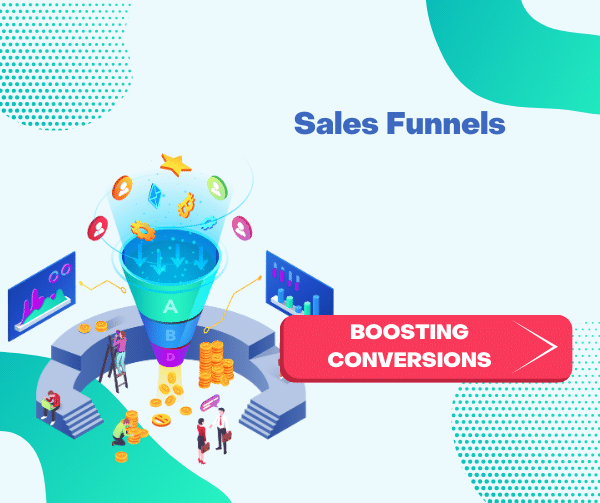
The sales process can be envisioned as a journey that potential clients take, led by your sales funnel from initial curiosity to repeat purchasers.
To make the most of this voyage, it is essential to comprehend both the stages of an efficient sales funnel and the whole sales cycle. These four steps - Awareness, Interest, Decision-Making & Action - unite in forming a smooth and engaging customer experience.
Why are sales funnels effective?
The sales funnel is a proven tool used to transform prospects from the initial level of recognition into buyers, in turn making them customers. It depicts how potential clients pass through a specific series of steps known as the marketing or sales pipeline.
Here is a sample of the process of transforming a prospect into a buyer with a sales funnel; an advertisement video will grab someone’s attention and take them to a landing page where they receive details about your product/service before providing their email address for either discounted access or free downloads.
Afterward, these leads are guided through the natural steps they would make at a brick-and-mortar store, for example, providing information, offers, or detailed explanations, until the final purchase occurs.
Thus improving conversion rates and fostering success within companies utilizing their own tailored B2B & B2C sales funnels designed specifically for promotional campaigns involving adverts that successfully reach each individual goal-orientated target market more accurately than normal methods do.
Why are sales funnels important?
Sales funnels are incredibly valuable for businesses because they allow you to:
- Identify where customers are dropping out of your sales process
- Guide customers toward a purchase with targeted content
- Understand your customer's journey better
- Improve conversion rates across your marketing channels
In other words, sales funnels make your sales and marketing way more effective
Sales funnels are an invaluable asset for optimizing marketing strategies, improving conversion rates, and boosting sales.
By understanding how they function, you can gain valuable insight into customer behavior which helps you make informed decisions that benefit your business operations.
The stages in creating a successful funnel have specific purposes when it comes to leading potential clients through the buying journey. From spreading awareness about your product or service all the way up until closing sales opportunities.
Having an effective sales funnel will create helpful notifications at precise times for your prospects and increase the chances of success with conversions.
Plus, setting up these optimized funnels lets customers explore available offers easily while producing positive outcomes - such as displaying a shopping cart link prominently on eCommerce stores so purchasers don’t abandon midway through transactions but instead go straight through smoothly with their purchase processes.
The Anatomy of an Effective Sales Funnel
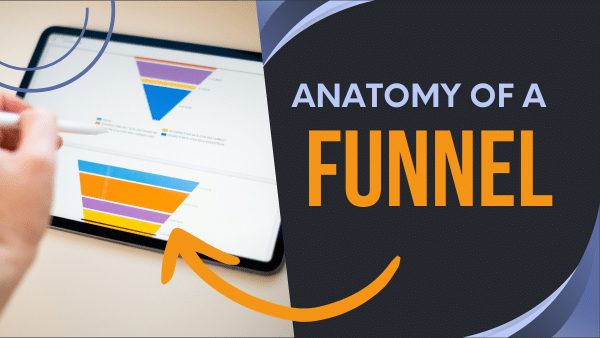
For a successful sales funnel to be created, it is necessary to comprehend both its framework and each stage’s purpose.
A reliable sales funnel consists of four stages: Awareness, Interest, Decision and Action – all tailored towards taking prospective customers through the purchasing process with content and marketing initiatives that fit their individual wants & needs.
Awareness Stage
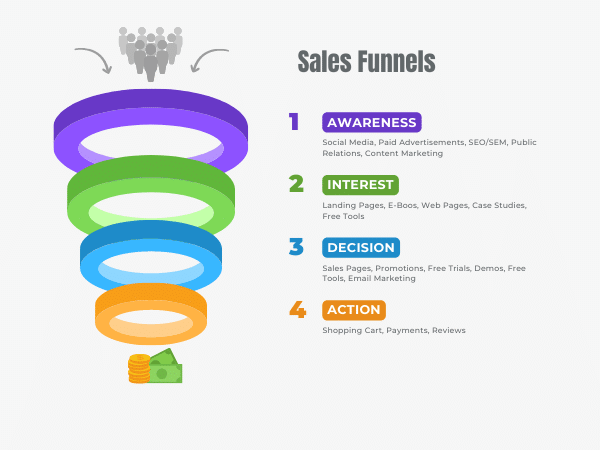
The Awareness stage is essential for achieving the attention of your prospects. Employing various marketing channels and lead-generation techniques can help businesses draw in potential buyers while establishing brand recognition.
Approaches such as advertising, word-of-mouth referrals, and social media platforms like Google search or business blogs are effective tools when raising awareness of a product or service offering.
The main focus during this step should be creating an initial connection with target audiences by sparking curiosity around your offerings. Constructing informative blog posts and targeted ads on social sites will increase visibility among consumers you want to reach out to.
Interest Stage

In order to successfully move potential customers through the sales funnel, it's important to create interest in your product or service. This can be done through educating the customer about what you have to offer, which is known as the interest stage.
During this stage, you have the opportunity to nurture your new leads through various means, such as informational videos or blog posts on your website.
The ultimate goal of this phase is to get potential customers excited about what you're offering and make it easy for them to decide.
By effectively implementing the interest stage, you'll be on your way to converting leads into customers.
Decision Stage
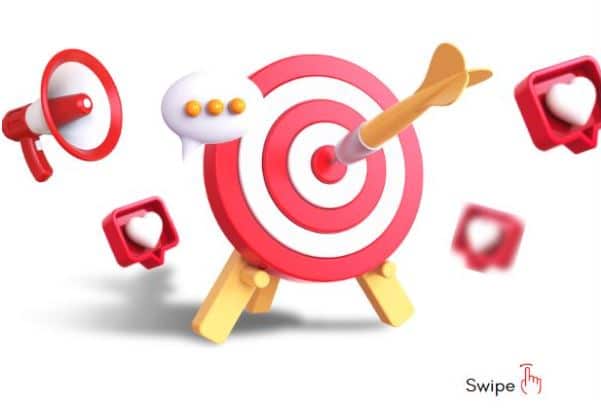
The decision stage is perhaps the most important, as it's the moment when your potential customers are ready to take action on an offer presented to them. All of your hard work thus far has led up to this point, and it's essential that any potential doubts or hesitations they may have are eliminated.
If you've done your job correctly in the earlier stages of the sales funnel, you'll have instilled confidence in your potential customers, and the decision-making process will be smooth. It's important to remember that decision-making doesn't only happen at this stage; it takes place at every step of the sales process.
However, focusing on making your offer irresistible at the decision stage will ensure that customers take the desired action.
Action Stage
As you start guiding your prospective customers through the sales funnel stages, you'll eventually reach the "bottom of the funnel." This is where you'll need to provide a strong call to action in order to turn leads into actual customers.
At this stage, it's all about presenting your offer and laying out a clear path for them to take in order to make a purchase. Your goal should be to get them into buying mode and help them reach their final destination.
Keep in mind that making the process as easy and clear as possible for them is crucial to achieving this goal. So, take the time to carefully craft your call to action and make it irresistible.
Building Your Custom Sales Funnel: A Step-by-Step Guide
Having described the advantages and necessity of an effective sales funnel for your business, it is time to describe to you how to build a tailor-made one that meets your business needs. By following a systematic plan, you can construct an effective & successful sales funnel that resonates with your potential customers and encourages them to take action.
Identifying Your Target Audience
The success of a sales funnel that effectively addresses the needs and preferences of potential customers begins first and foremost with knowing who your target audience is.
This can be achieved by taking into account characteristics like demographics, interests or behaviors they have in common. Understanding the audience you are targeting allows for maximum effect from marketing efforts because then it’s easier to communicate value to them while also encouraging decisions towards purchase.
Studying existing customer base reviews as well as utilizing automation tools related to marketing information, can provide insights regarding this important segmentation group ultimately helping maximize conversion rates via successful campaigns accordingly tailored just for them.
Crafting Engaging Content
For an effective customer journey that leads to more sales, it is important to create content specifically tailored for each stage of the sales funnel. When writing such material aimed at your target audience, ensure you maintain enthusiasm and appeal with engaging content like images or better, with videos.
Studies have shown video content helps capture the attention of prospects better than any other type of media.
Using techniques like personalization and multi-channel marketing can optimize your sales funnel by providing a consistent experience through multiple channels while engaging potential customers throughout their buying process.
Leveraging Marketing Automation Tools
When setting up a sales funnel, implementing marketing automation tools is critical. These software platforms are designed to streamline tasks and optimize business efforts by reducing time consumption while heightening efficiency.
Popular solutions include HubSpot, Adobe Marketo Engage, Sender, ManyChat, LeadSquared, Active Campaign, etc., each offering varying degrees of customization for pricing plans as well as analytics support and scalability options.
Incorporating such strategies into your existing system has the potential to boost success levels across all stages of the buyer’s journey. From lead generation through customer segmentation, right until the conversion is achieved.
By automating certain processes related to emailing campaigns or score-based leads, you have an increased chance of targeting quality customers more effectively, thus making positive impacts on overall performance indicators including revenue growth.
The key when choosing a tool lies in understanding what needs arise out of one’s business model in terms of integrations available and AI capabilities along with learning curves required so that maximum impact can be obtained. The articles and guides shared here will help with this process.
Tracking and Analyzing Sales Funnel Metrics
Tracking the right sales funnel metrics is crucial if you really want to grow your biz! Let's look at the key ones.
First, you need to know how many leads enter your funnel - the volume. Getting lots of interest is always great as you can imagine!
Then see how quickly they move through - the velocity. Faster is better to keep momentum going.
The big one is conversion rate - what percentage of leads become customers? Optimize to turn those leads into sales!
Monitor these marketing funnel metrics over time. Set measurable goals to stay aligned with your objectives.
Use the data to make decisions that boost performance. Tweak each stage of the funnel to drive more conversions.
It's a continuous process of reviewing, analyzing, and improving. But get it right, and your sales will skyrocket.
Sales Funnel Best Practices: Tips for Maximizing Conversions
For long-term success and increased conversions, it’s essential to adopt sales funnel best practices such as personalization, multi-channel marketing, and continuous improvement.
Developing a smooth customer experience with these tactics can drive substantial revenue growth. To stay ahead of competitors, you need to constantly optimize the funnel and adjust it according to your customers’ needs.
A successful sale process is not universal. Regular fine-tuning is required to stay ahead of your objectives.
Personalization
Personalizing your sales funnel can be a total game-changer. Your sales team needs to gather data on prospects to really customize things.
Get to know your customers' needs and preferences, then tailor offerings just for them. Create personalized products or use AI to provide a more convenient experience.
Have your team make meaningful connections in-store to build relationships. Get them to chat with prospects to learn what matters most.
With these insights, your marketing team can send targeted messages that speak directly to what your audience cares about.
This personal touch helps you stand out from the competition. It gets prospects excited to buy from you specifically.
When you appeal to customers on a personal level, your sales team can drive conversions.
A customized sales funnel makes people feel valued. And isn't that what every buyer wants these days?
Multi-channel Marketing
Multi-channel marketing is a technique used to engage customers through many different means in order to create an effective campaign.
By making use of various channels, organizations can make sure their message is seen by potential customers at multiple points and thereby grow brand recognition and engagement levels.
Your sales reps need to engage customers across many different platforms.
The advantages of this approach include broadened reach, higher success rates with conversions, as well as heightened client satisfaction rates due to the personalization opportunity it provides for tailoring messages according to specific target audiences' preferences.
With a multi-channel approach, your sales reps can drive way higher conversion rates. There are more opportunities to turn prospects into customers.
This process allows businesses to deliver more impactful experiences that capture individuals’ attention, leading them closer toward the desired conversion goals they seek out after investing in these campaigns' efforts wisely.
To properly implement multi-channel strategies, some key considerations should be taken: focusing on select outlets that are best suited for corresponding consumer bases, rigorous testing and optimizing tactics prior to launching any initiatives, and being flexible enough to adapt plans according to data analytics learnings over time.
Continuous Improvement
The concept of continuous improvement involves striving for advancements in products, services, and processes. Making improvements to the sales funnel over time is vital to ensure that it performs well with respect to business goals and drives more conversions.
This requires setting objectives that can be evaluated through data analysis followed by regular optimization activities so as to keep the process efficient.
An effective approach entails continuously measuring progress against set targets while using accumulated information such as feedback from customers or test results about new strategies in order to improve upon existing solutions thereby maximizing returns on investments.
Summary
If you're running a business and want to grow, having a solid marketing funnel is so important. Let's break it down into the key stages customers go through.
First, you need to attract their attention and interest them with great content. Really understand your target audience so you can create stuff that pulls them in.
Next, convert those interested prospects into leads by capturing their contact info in exchange for an offer or content. This is where automation tools can nurture leads along.
After that, work on closing the sale by building trust, addressing concerns, and showing value. Multi-channel personalization helps tailor your messaging here.
Lastly, don't forget customer retention - keep delivering value after the sale, and they'll keep coming back for more!
See how each stage moves prospects further down the funnel, turning strangers into paying customers? It takes strategy, tools, content and optimization. But do it right, and you'll be growing your business for sure!
Frequently Asked Questions
How do you create a sales funnel?
Creating a sales funnel can be accomplished easily and efficiently using the right tools and guides. There are multiple tools available, including ClickFunnels, LeadPages, GoHighLevel, and Thrive Architect, just to mention a few.
Once you've chosen your desired landing page template, it's time to design the content of each part in the sales funnel using a drag & drop editor. It's important to understand the different sales funnel stages and set a goal to trigger your campaign.
This can be followed up with notifications for lead nurturing, engagement, or conversion events. With this process, you can create a sales funnel that is tailored to your target audience and sets you up for success.
What is a real example of a sales funnel?
The Tripwire Funnel, a popular example of a sales funnel approach, is utilized to capture the attention and entice potential customers by offering them an economical product - known as “the tripwire”, allowing them access to the direct selling platform.
This method has been proven effective in terms of boosting revenues and developing customer loyalty at the same time.
What are the 5 stages of sales funnels?
The sales funnel is a process made up of five essential steps that lead to success: Awareness, Interest, Evaluation, Engagement and Purchase. Each phase enables potential buyers to gain more knowledge about the product being sold so they can come to an informed decision on whether or not it’s right for them before buying.
What does funnel mean in sales?
A sales funnel is the marketing term used to capture and describe the journey that potential customers go through, from prospecting to purchasing. It consists of several steps, varying with each company’s sales model, that takes prospects closer to making a purchase.
These steps can include things like website visits, email campaigns, social media posts, and more. Each step is designed to move the prospect closer to making a purchase. Companies use sales funnels to track and measure sales.
How can I identify my target audience for a successful sales funnel?
In order to determine the target audience, customer data should be studied and consumer feedback taken into consideration. Marketing automation tools can help Enhance understanding of customers’ requirements as well as provide support for crafting targeted campaigns that meet their expectations.
Through these resources, you will gain insight into your consumers’ needs while formulating a strategy specifically designed to address them all at once.
Do Sales Funnels really work?
Yes. If you're looking to increase your revenue and attract more paying customers, then you need a well-designed sales funnel. Sales funnels are an effective way to guide potential customers through the buying process, from awareness to consideration to the final purchase.
By creating a system that's designed to capture leads and convert them into paying customers, you can generate more traffic, improve engagement, and ultimately boost sales.
